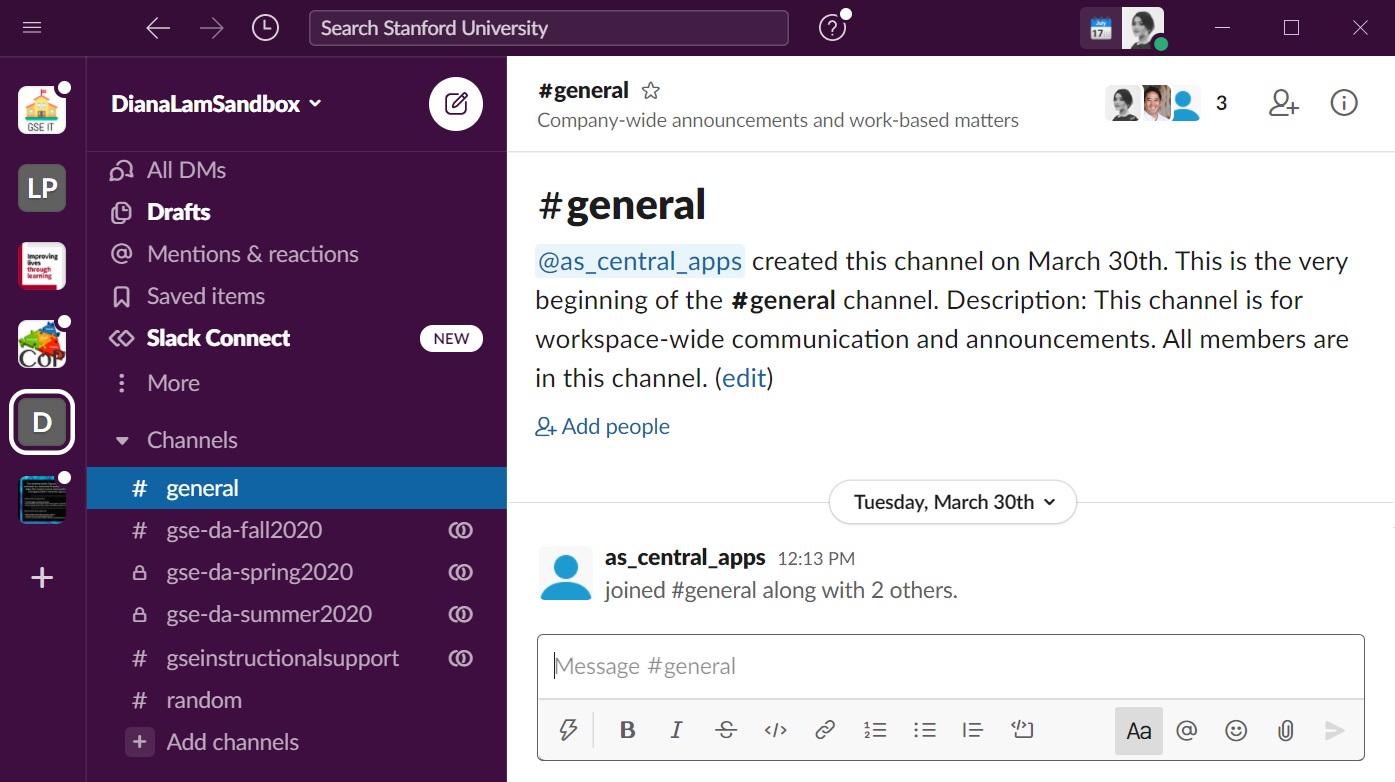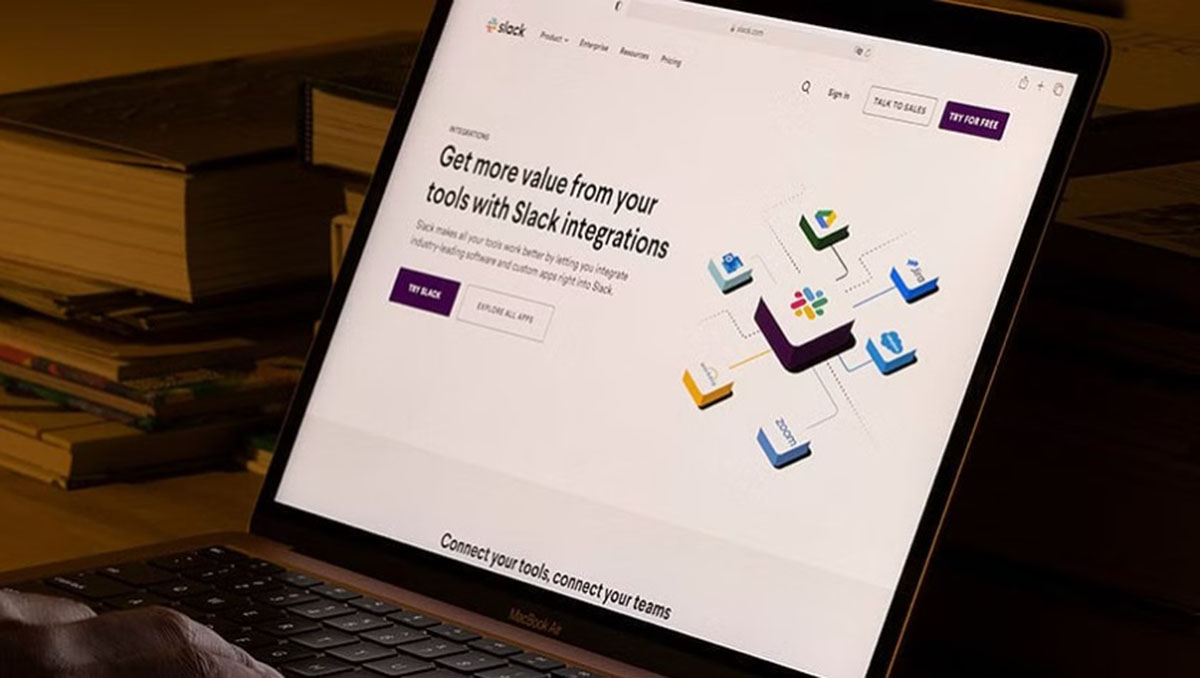Introduction
Welcome to the world of Slack, where communication and collaboration are taken to a whole new level. If you’re looking to create a user group in Slack, you’re in the right place! User groups in Slack are a fantastic way to bring together individuals with common interests, roles, or projects. By creating a dedicated user group, you can streamline communication, foster collaboration, and enhance productivity.
Whether you want to create a group for your colleagues, a community of like-minded professionals, or a team within your organization, this guide will walk you through the steps of setting up and managing a user group in Slack.
Setting up a user group in Slack is a straightforward process, even if you’re new to the platform. In just a few simple steps, you can have your user group up and running, ready to connect and engage with its members. Throughout this guide, we’ll cover everything from inviting members to customizing group settings and managing permissions.
Managing a user group in Slack provides several benefits. It allows members to focus their discussions, share resources, and collaborate in a dedicated space. User groups also provide a sense of belonging and foster a strong community spirit that can ultimately improve team dynamics and overall project success.
So, whether you’re a team lead, community manager, or enthusiastic Slack user looking to bring people together, let’s dive in and discover how to create a user group in Slack and leverage its features to enhance your communication and collaboration.
Step 1: Setting up a User Group in Slack
Creating a user group in Slack is a simple process that involves a few clicks and some basic information. Here’s a step-by-step guide to help you get started:
- Open Slack and sign in to your workspace. If you don’t have a workspace, you’ll need to create one.
- Once in your workspace, locate the sidebar on the left side of the screen. Here, you’ll find the options to create channels, direct messages, and user groups.
- Click on the plus icon (+) next to “User Groups.” A new window will appear, prompting you to provide a name for your user group.
- Choose a descriptive and memorable name for your user group. This will help members easily identify and join the group.
- Optionally, you can provide a purpose for your user group. This can be a brief description that explains the group’s focus, goals, or any specific guidelines for participation.
- Next, you have the option to choose a privacy setting for your user group. Slack offers two options: Public and Private.
- A Public user group allows any member of your workspace to join and participate in the group discussions. This is ideal for open collaboration and knowledge sharing.
- A Private user group, on the other hand, restricts membership to invited members only. This is useful when confidentiality or restricted access is required.
- After selecting the privacy setting, click on the “Create User Group” button to finalize the creation process.
- Voila! You have successfully created a user group in Slack. Now, it’s time to invite members and start collaborating.
Setting up a user group lays the foundation for effective communication and collaboration. By choosing a meaningful name, providing a clear purpose, and selecting the appropriate privacy setting, you will create an inviting environment that attracts like-minded individuals and facilitates productive discussions.
Now that you’ve completed the first step, let’s move on to the next one: inviting members to your newly created user group.
Step 2: Inviting Members to the User Group
Now that you have created a user group in Slack, it’s time to invite members to join and start collaborating. Here’s how you can do it:
- Open Slack and navigate to your user group by clicking on the “User Groups” section in the sidebar on the left.
- Once you are in the user group, locate the “Members” tab at the top of the screen.
- Click on the “Invite People” button to invite members to the user group.
- In the invitation window, you can add members by their email addresses or Slack usernames.
- As you add members, Slack will display their names and profile pictures, allowing you to confirm that you are inviting the correct individuals.
- Optionally, you can include a personalized message in the invitation to provide additional context or instructions to the invitees.
- Once you have added all the desired members and customized your invitation, click on the “Send Invitations” button to invite them to join the user group.
- Invited members will receive an email notification and a Slack notification informing them about the invitation. They can accept the invitation by clicking on the provided link.
- When members accept the invitation, they will be added to the user group, and they can start participating in the discussions and collaborating with other members.
Inviting members to your user group ensures that the right people are included in the conversation and allows for meaningful collaboration within the group. By following these simple steps, you can quickly build a vibrant and engaging community within your user group.
Now that you have successfully invited members to your user group, let’s move on to the next step: customizing user group settings to optimize communication and collaboration.
Step 3: Customizing User Group Settings
Customizing user group settings in Slack allows you to tailor the experience to meet the specific needs and preferences of your user group members. Here’s how you can customize the settings:
- Open Slack and navigate to your user group by clicking on the “User Groups” section in the sidebar on the left.
- Once you are in the user group, click on the gear icon (settings) next to the user group name.
- In the settings menu, you can customize various aspects of the user group:
- Description: Update or modify the description of the user group to provide more information or clarify its purpose.
- Header: Add a custom header image that reflects the identity or theme of your user group.
- Appearance: Choose a color scheme for the user group’s sidebar and header, which adds visual distinction and cohesion to the group.
- Notifications: Adjust the notification preferences for the user group to ensure that members receive relevant updates without being overwhelmed.
- Members: Manage the list of members in the user group, including removing or adding new members as needed.
- Integration: Integrate third-party apps or tools to enhance the functionality and capabilities of the user group.
- Once you have customized the desired settings, click on the “Save” button to apply the changes.
Customizing user group settings allows you to create an environment that aligns with the goals and preferences of your user group. By updating the description, adding a header image, and selecting an appealing color scheme, you can make the user group visually appealing and distinguish it from other groups in your workspace.
Additionally, adjusting notification preferences ensures that members stay informed without feeling overwhelmed by excessive notifications. By fine-tuning these settings, you can create a balance between being up-to-date with relevant discussions and maintaining a focused work environment.
Now that you have customized the user group settings, let’s move on to the next step: managing user group permissions to control access and collaboration within the group.
Step 4: Managing User Group Permissions
Managing user group permissions in Slack allows you to control access and collaboration within the user group. By defining permissions, you can determine who can perform certain actions and ensure that the group operates smoothly. Here’s how you can manage user group permissions:
- Open Slack and navigate to your user group by clicking on the “User Groups” section in the sidebar on the left.
- Once you are in the user group, click on the gear icon (settings) next to the user group name.
- In the settings menu, select the “Permissions” tab.
- Here, you’ll find a list of permission categories, such as posting, joining, and viewing. Each category contains different options that you can customize based on your requirements.
- By default, all members in the user group have the same permissions. However, you can customize permissions for individual members by clicking on the “Add a user” button and selecting the desired member.
- Once you have selected a member, you can define their permissions by toggling the switches for different categories.
- You can also set default permissions for new members joining the user group by adjusting the options in the “Default permissions for new users” section.
- After customizing the permissions, click on the “Save” button to apply the changes.
Managing user group permissions ensures that the right members have the appropriate level of access and control within the group. By defining permissions, you can prevent unauthorized actions, promote a secure environment, and streamline collaboration within the user group.
Keep in mind that permission management requires careful consideration. Think about the goals of your user group, the level of trust you have in its members, and the type of collaboration that takes place. Striking the right balance of permissions will facilitate effective communication and collaboration while promoting a sense of ownership and responsibility among group members.
Now that you have successfully managed user group permissions, let’s move on to the next step: communicating and collaborating within the user group.
Step 5: Communicating and Collaborating in the User Group
Now that you have set up and customized your user group in Slack, it’s time to start communicating and collaborating with your group members. Here are some tips to ensure effective communication within the user group:
- Channels: Create dedicated channels within the user group to organize discussions around specific topics, projects, or interests. This helps members easily find and engage in relevant conversations.
- Threads: Encourage members to use threads to keep discussions focused and organized. Threads help prevent conversations from becoming cluttered and make it easier to follow specific topics.
- Sharing Content: Share and collaborate on documents, files, and other resources directly within the user group. You can use Slack’s file-sharing feature to keep all relevant materials in one place.
- Notifications: Set notification preferences to receive updates on important conversations and mentions within the user group. Adjust the settings to ensure you stay informed without being overwhelmed by excessive notifications.
- Etiquette: Establish guidelines or etiquette for communication within the user group. Encourage members to be respectful, professional, and concise in their messages to promote a positive and inclusive environment.
- Integration: Integrate third-party tools and apps that enhance collaboration within the user group. You can integrate project management tools, video conferencing platforms, or other productivity apps to streamline workflows and improve productivity.
Effective communication and collaboration within the user group foster a sense of community and enable members to exchange ideas, insights, and expertise. By leveraging channels, threads, and other collaborative features, you can create a space where members can connect, share knowledge, and work together towards common goals.
Remember to promote active participation within the user group by encouraging members to share their thoughts, ask questions, and support one another. A thriving user group is one where everyone feels comfortable and engaged.
Now that you have learned how to effectively communicate and collaborate within the user group, let’s move on to the final step: troubleshooting user group issues.
Step 6: Troubleshooting User Group Issues
While user groups in Slack are designed to facilitate seamless communication and collaboration, occasional issues may arise. Here are some common user group issues and how to troubleshoot them:
- Access Problems: If a member is unable to access the user group, verify that they have been added as a member and that the user group’s privacy settings are set appropriately.
- Conflicts and Misunderstandings: In the event of conflicts or misunderstandings within the user group, encourage open and respectful communication. Address any issues promptly, and encourage members to reach out for assistance or mediation if needed.
- Low Engagement: If the user group is experiencing low engagement, consider revisiting its purpose and engaging members through targeted discussions, relevant content, and prompt responses to foster a sense of value and community.
- Technical Difficulties: In case of technical difficulties, check for any network issues or updates required for the Slack application. Encourage members to report any technical issues they encounter to the Slack support team.
- Privacy Concerns: If there are concerns about privacy within the user group, review the access permissions and address any member requests for increased privacy or confidentiality. Communicate openly about the privacy measures and available options.
- Inactive Members: For user groups with inactive members, consider reaching out to them individually to understand their level of engagement. Offer assistance or provide additional resources if needed, or consider removing inactive members to maintain an engaged and active user group.
Remember, troubleshooting user group issues requires proactive communication, active moderation, and a willingness to address concerns promptly. It’s important to foster a supportive and inclusive environment where members feel comfortable and supported.
By addressing these common user group issues as they arise, you can ensure the user group remains a valuable and productive space for communication and collaboration.
Congratulations! Now you have successfully learned how to troubleshoot user group issues and create a thriving user group in Slack. Keep exploring the features and options available to you, and adapt them to suit the needs of your specific user group.
Conclusion
Creating a user group in Slack is an effective way to bring together individuals with common interests, roles, or projects, providing a dedicated space for communication and collaboration. By following the steps outlined in this guide, you have learned how to set up a user group, invite members, customize settings, manage permissions, communicate effectively, and troubleshoot common issues that may arise.
Setting up a user group in Slack is just the beginning. It’s important to continuously nurture the group by fostering open communication, encouraging active participation, and providing valuable resources and support to its members. Regularly reviewing and adjusting the group’s settings and permissions can help keep the user group running smoothly and ensure that it aligns with the changing needs of its members.
Remember, effective communication and collaboration are the pillars that drive the success of any user group. Encourage members to share their thoughts, ask questions, and collaborate on projects. By leveraging the features and integrations available in Slack, you can streamline workflows, enhance productivity, and create an engaged and vibrant user group.
As you embark on this journey of building and managing a user group in Slack, embrace the opportunity to foster a sense of community, empower members, and drive meaningful collaboration. With your dedication and the powerful tools provided by Slack, you can create a dynamic and thriving user group that brings people together and achieves remarkable results.

























